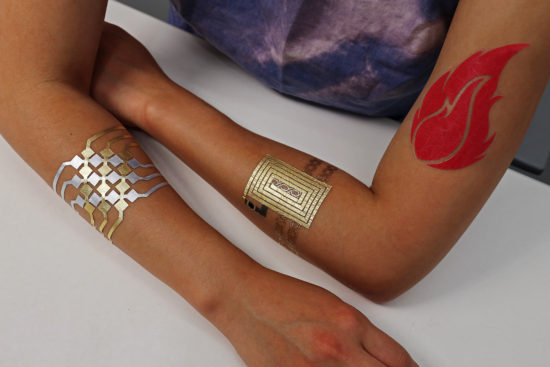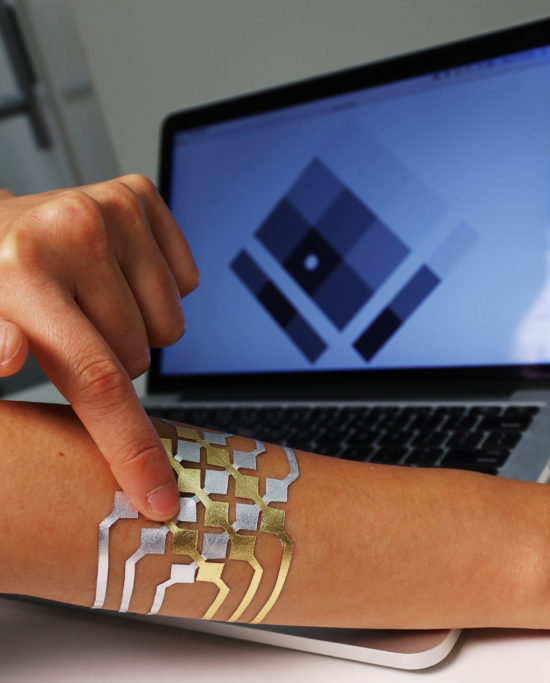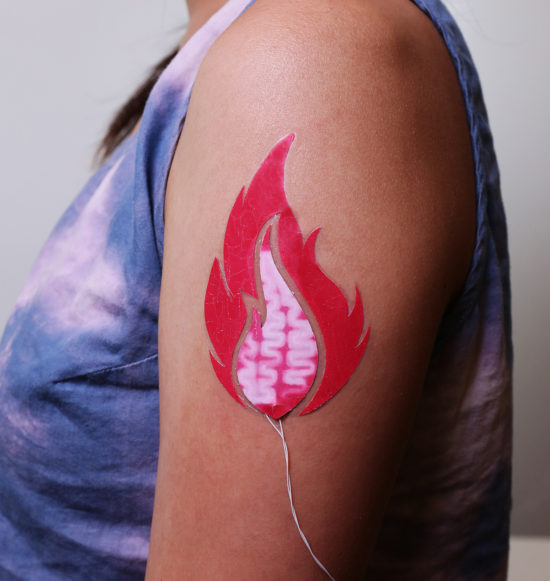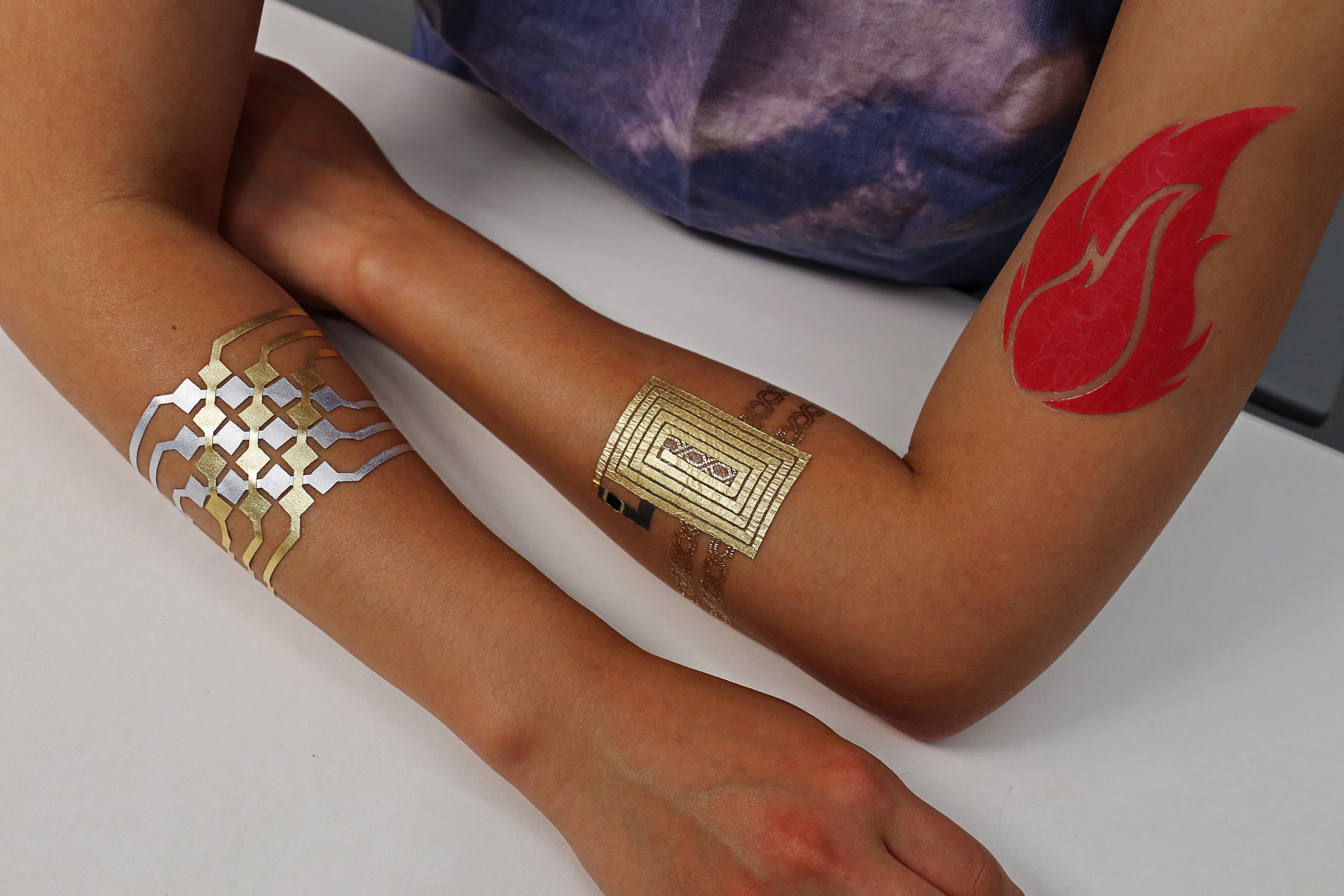
MIT have been at it again, just when you thought you were as sci-fi as you could be they throw out a curve-ball. Forget smartwatches, Smart tattoos are probably going to be popping up all over the place in the future. Named Duoskin and developed by MIT Media Lab, in partnership with Microsoft Research, these are smart tattoos with three different functions:
 |
INPUT Using DuoSkin, we created on-skin input elements that resemble traditional user interfaces, such as buttons, sliders, and 2D trackpads.The 2D touchpad uses row-column scanning in a two-layer construction that isolates horizontal traces from vertical traces. We fabricate the two layers separately and then apply and overlay them onto skin. |
 |
OUTPUT DuoSkin brings soft displays onto the skin, enabled through the ink-like qualities of thermochromic pigments. These displays have two different states and color change is triggered when heated beyond body temperature. Displays can also be separated into designated parts. To activate color changes on our displays, we fabricate resistive heating elements underneath the thermochromic layer. |
 |
COMMUNICATION To exchange data across on-skin interfaces, communication needs to be wireless. DuoSkin devices communicate using NFC, whose tags comprise a chip that connects to a coil. We fabricate this coil using gold leaf, customized to various shapes and sizes |
As explained above, the smart-tats incorporate gold leaf in their design. This is the same as the gold leaf used in some cooking, especially chocolate; a material that’s cheap, skin-friendly, and robust for everyday wear.
The statement displayed on the Duoskin site gives us an idea on the future possibilities of this technology,
“We believe that in the future, on-skin electronics will no longer be black-boxed and mystified; instead, they will converge towards the user friendliness, extensibility, and aesthetics of body decorations, forming a DuoSkin integrated to the extent that it has seemingly disappeared.”
Will these catch on as the smartphone did? Ultimately only time will tell, though if you are interested in reading about the tech in depth, the full paper from MIT will be appearing at International Symposium on Wearable Computers 2016 (ISWC’16).
